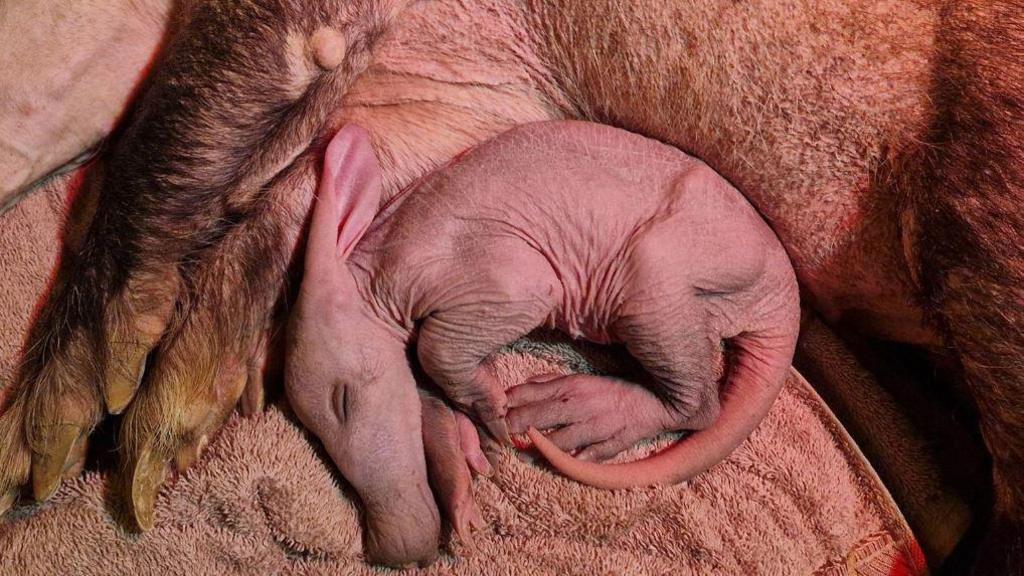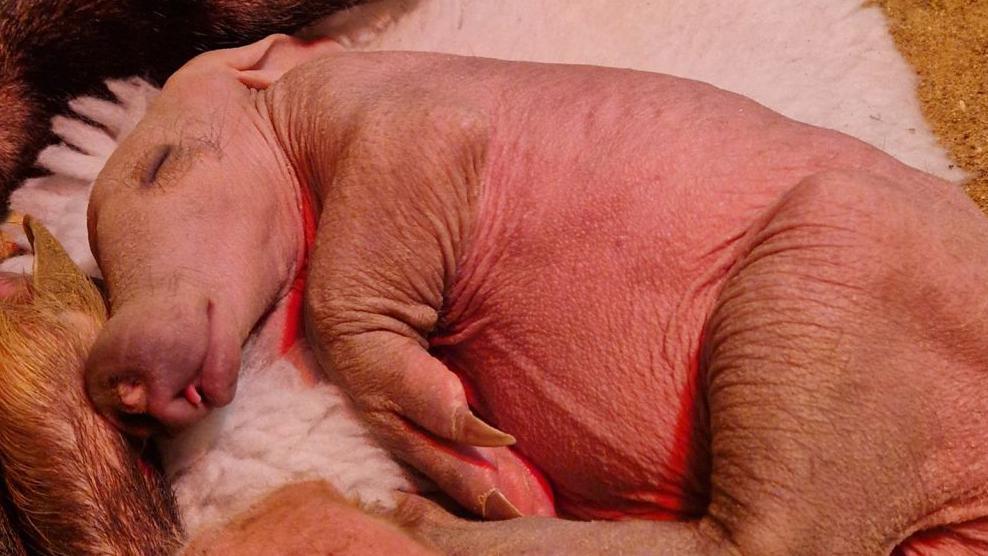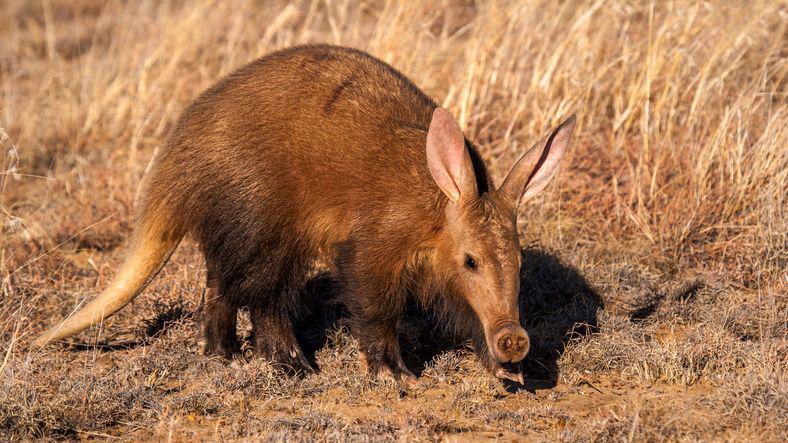Meet the sleepy baby aardvark born at Colchester Zoo

- Published
Check out this super cute baby aardvark which has been born at Colchester Zoo in Essex.
Keepers say they are "delighted" that their aardvark family has grown, in what they say is a boost for conservation efforts.
They added that both mother and baby are doing very well and that they're keeping a close eye on them.
The sleepy newborn arrived last month. However, it will still be a few months before staff will be able to find out whether it's a boy or girl.
More animal news
Meet Kayemba - the rare okapi born at Marwell Zoo
- Published24 December 2024
From pirate spiders to veggie piranhas - this year's newly named species
- Published20 December 2024
Nikon Comedy Wildlife Awards: Hilarious winning pictures revealed
- Published10 December 2024
What's happened?

The baby aardvark arrived on 29 November to mother OQ and father Koos.
The new arrival is OQ's 12th offspring, and keepers at the zoo say that she is proving to be "an excellent and caring parent."
They added that they're thrilled "the pair have managed to welcome another addition to the group, helping towards the conservation of this species."
Baby aardvarks weigh around a kilogram at birth and they're born with droopy ears and wrinkled skin.
As they grow, their wrinkles gradually disappear and their ears become upright.
Aardvarks can often be found sleeping during the day as they're nocturnal animals - meaning they are active at night.
Top aardvark facts

1. Aardvarks can be found living in much of sub-Saharan Africa
2. The word aardvark translates to "earth pig" in the southern African language of Afrikaans and even though they might look similar to pigs - they're actually related to elephants
3. Aardvarks use their long noses and good sense of smell to sniff out ants and termites, which they eat
4. Their long tongue, which can measure up to 25cm, is covered in sticky saliva to help them lap up their food and they can eat up to 50,000 insects each night
5. They are excellent diggers thanks to their powerful claws, which can tear open termite mounds and dig underground burrows where they live
